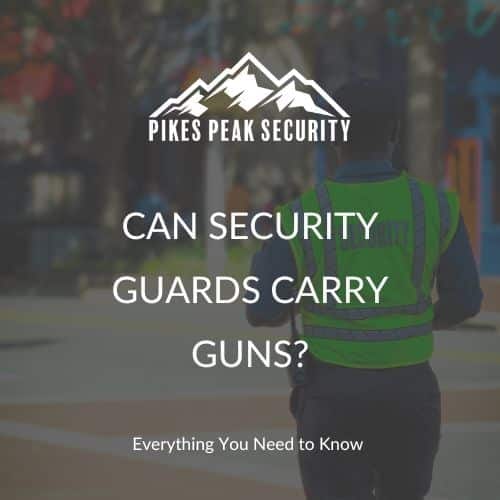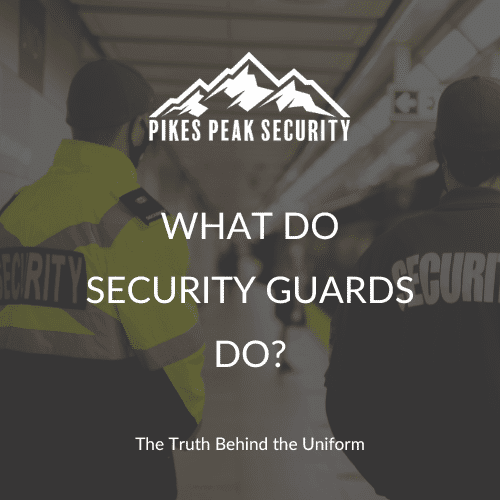School should be a safe place for children to learn and grow, but this is not always the case. Though school security issues are not easy to discuss, especially in the wake of tragedy, we need to do more as administrators and community members to protect the children who come into our local schools. Not everyone agrees on how to improve school security, but we’ll share a few techniques that can help keep our schools safe this fall.
At Pikes Peak Security, we hire the best security professionals in southern Colorado. Each of our staff members has a law enforcement or military background. Our passion is to keep our community members safe as they go to work, school, and events, whether that means providing on-site security, personal defense training, or safety tips.
What is School Safety?
School safety means that students at school or school-related events are protected from physical and emotional harm.
Though our minds tend to go to the worst-case scenario, school safety encompasses much more than preventing an active shooter. It should also involve preventing trespassers, addressing bullying, providing resources to students struggling with depression, and more. A ten-point school safety plan published by the Department of Justice in 2020 placed equal emphasis on physical safety and emotional security.
10 Ways to Improve School Safety
1. Conduct a Risk Assessment
Conducting a risk assessment is a crucial first step in ensuring school safety. A comprehensive assessment allows you to see potential issues in your school safety plan and identify areas of your campus that may need additional security. You can hire a third-party organization to conduct this assessment or create an internal team, using a resource like this one from the National Association of Secondary School Principals. Your safety plan should be a living document that you revisit at least once a year.
2. Monitor Access Points
Limiting the number of entrances is a great way to prevent trespassers or other unauthorized visitors. Limiting your school to one main entrance is ideal, but larger schools may need additional doors for students and staff. Visitors should all be directed through the main entrance, however. Other entrances and emergency exits should be locked throughout the day and checked periodically for tampering.
3. Bolster Classroom Security
According to the DOJ’s school safety report, over 70% of public school classrooms were built in the 1970s. It’s crucial to retrofit older classrooms with the following security measures:
- Doors that can be locked from the inside or remotely
- Window and door coverings
- Uncluttered secure spaces where students will be safe from projectiles
- Emergency communication system, like a panic button
- Video surveillance

4. Create a Secure Perimeter
Installing fences around student areas, having designated pick-up and drop-off zones, and introducing parking lot surveillance can help your staff or security notice suspicious activity. A secure perimeter also keeps children safe as they enter and leave the school, rather than just when they are on-site.
5. Perform School Security Drills and Training
Conduct regular fire and lockdown drills, so your staff and students know how to respond to emergencies. You should debrief staff and students after drills to address what went well and what needs to be done differently in the future.
Teachers and other school staff should also be trained to spot behavioral warning signs in students and follow the school’s intervention policies.
6. Establish Anonymous Reporting Procedures
Make sure that you have reporting procedures in place and educate students on indicators of self-harm or violence. Many children are uncomfortable approaching an authority figure with a concern, so anonymous reporting can help school staff catch early warning signs. Also, develop a climate of trust and care within your school so students can approach staff with struggles or concerns.
7. Provide School Mental Health Resources
Mental health resources help with emotional safety and the prevention of self-harm behaviors. Work toward employing an adequate team of school counselors or psychiatrists and making services accessible to students.
8. Coordinate with First Responders
Provide your local fire department and law enforcement with a copy of your safety plan and coordinate with them on drills and training. Establish a method of emergency communication and ensure they can access all sections of the building. First responders can also help with risk assessments and evaluate emergency responses during drills.
9. Prioritize Two-Way Emergency Communication
Two-way communication is a system that allows all teachers, administrators, staff, and security to communicate during an emergency. Panic buttons or classroom microphones with speakers that connect to the security office are two examples of this
10. Hire School Security
School security guards can provide a quick response to emergencies and partner with local law enforcement once they arrive. The presence of a security guard is also a deterrent for minor crimes.
Hire a School Security Officer with Pikes Peak Security
When looking for a school security officer in Colorado Springs, you want someone with a law-enforcement background who can remain calm in an emergency. All our Pikes Peak Security staff served in the military or law enforcement and are willing to sacrifice their safety for others. In addition, our team stays current on relevant training and certifications, including firearms and first aid.
Contact us today to discuss how we can be part of your school’s safety plan.








